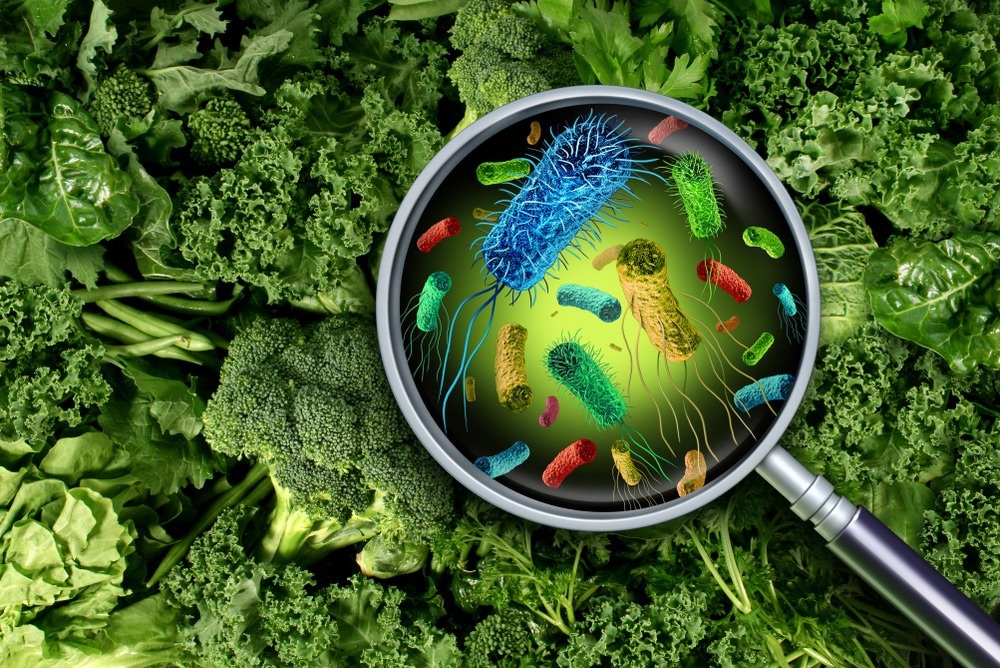Improved knowledge of antifouling and antibacterial qualities could be beneficial in the food industry since it can be used to increase the longevity of food and pharmaceutical components.

Study: High durability of food due to the flow cytometry proved antibacterial and antifouling properties of TiO2 decorated nanocomposite films. Image Credit: Lightspring/Shutterstock.com
In an article published in the journal Food and Chemical Toxicology, superhydrophillic modification of polyethersulfone membrane enhanced its antibacterial and antifouling properties.
Nanocomposite Films and their Applications
Nanocomposite films utilized are suitable for use within the food industry due to their enhanced longevity compared to previous materials.
Moreover, even when employed in a static condition, the antibacterial and antifouling properties of these coatings may be modified. A nanocomposites film is made up of a polymeric component and a nanoscale substance.
An excellent nanocomposite film requires proper material component selection as well as decent manufacturing and distribution procedures to achieve consistent dissolvability. Biological methods such as liquid separation have played an important part in membrane separation due to their great benefits and extensive industrial application.
Issues Faced in the Membrane Industry
Unfortunately, the membrane industry has been plagued by serious problems for decades. Membrane fouling is the most prevalent concern of businesses employing such substances, lowering permeability and longevity.
This is due to higher transmembrane pressure and reduced membrane penetration flow caused by the build-up of undesirable associated elements on the interface or in the membrane matrix in the feed solution.
Membrane fouling is classified into four forms determined by the nature of the molecules that might cause fouling: particulate fouling, inorganic fouling, organic fouling, and biofouling. Biofouling has been identified as a biological form of organic fouling as well as the most serious issue in the membrane process.
The leading causes of membrane biofouling include bacterial biofilm development, eukaryotic cell attachment, and protein degradation.
Biofilm is a microbiological population composed of eukaryotic and prokaryotic cell aggregation that comprises a network of extracellular polymeric substances (EPS) that may be linked to a membrane surface and play an important part in biofouling creation.
Methods to Prevent Membrane Biofouling
The interface between the membrane surface and foulant is the primary point that should be addressed in the fouling membrane phenomena; therefore, the grafting and wrapping techniques of the membrane with nanoparticles are the most explored.
Formerly, scientists created a nylon membrane that was modified by encapsulating silver (Ag) nanoparticles inside a hydrogel network and tested its antibacterial properties. The findings showed that the developed membrane handled biofouling with adhesion tolerance and antibacterial action.
The anti-biofouling behavior of the PVDF/TiO2 nanoparticle composite membrane has also been examined using different physicochemical parameters. The findings demonstrated strong antibacterial activity as well as protein resistance.
Specific metallic oxide nanoparticles, like TiO2 nanoparticles, Al2O3 nanoparticles, and SiO2 nanoparticles, have been used to combat fouling. Biofouling is mitigated by the antibacterial properties of nanoparticles.
Despite the efficiency of nanomaterials, particularly metal nanoparticles, harnessing their bactericidal characteristics is limited by high costs and necessitates engagement with pre-treatments like ultraviolet light.
These nanostructures can also alter the morphology of specific areas and prevent biological fouling. As a result, scientists shifted their research focus to surface morphology and microstructure to improve membrane performance.
Results of the Study
In this study, the created superhydrophobic layer on the PES membrane generated concurrent changes in surface smoothness and surface free energy, resulting in a significant reduction in the water contact angle with outstanding stability.
As per surface topography measurements, the mean surface quality on a micron scale decreased by 74%. The average surface roughness was noted to be between 70 and 110 nm with magnification adjustments of SEM images, which were typically enhanced near the nanoscale.
Hierarchical structures with smaller clusters with diameters ranging from 17 to 25 nm were found on top of these groupings. It was determined that bacterial cells do not accommodate the nanoparticle ruggedness.
Fluorescence microscopy and microtiter plate experiments revealed that the third phase of the TiO2 nanoparticle-coated membranes using the LTH procedure had the greatest drop in Staphylococcus aureus bacterial cell adhesion.
Ultimately, the findings revealed that surface wettability features considerably impacted the surface's biological activity and bioadhesive capabilities. Changing the hydrophobic nature of the membrane reduced the quantity of protein adsorption and bacterial adherence on the membrane.
Reference
Khalili, M., Razmjou, A., Shafiei, R., Shahavi, M. H., Li, M., & Orooji, Y. (2022). High durability of food due to the flow cytometry proved antibacterial and antifouling properties of TiO2 decorated nanocomposite films. Food and Chemical Toxicology. Available at: https://doi.org/10.1016/j.fct.2022.113291
Disclaimer: The views expressed here are those of the author expressed in their private capacity and do not necessarily represent the views of AZoM.com Limited T/A AZoNetwork the owner and operator of this website. This disclaimer forms part of the Terms and conditions of use of this website.